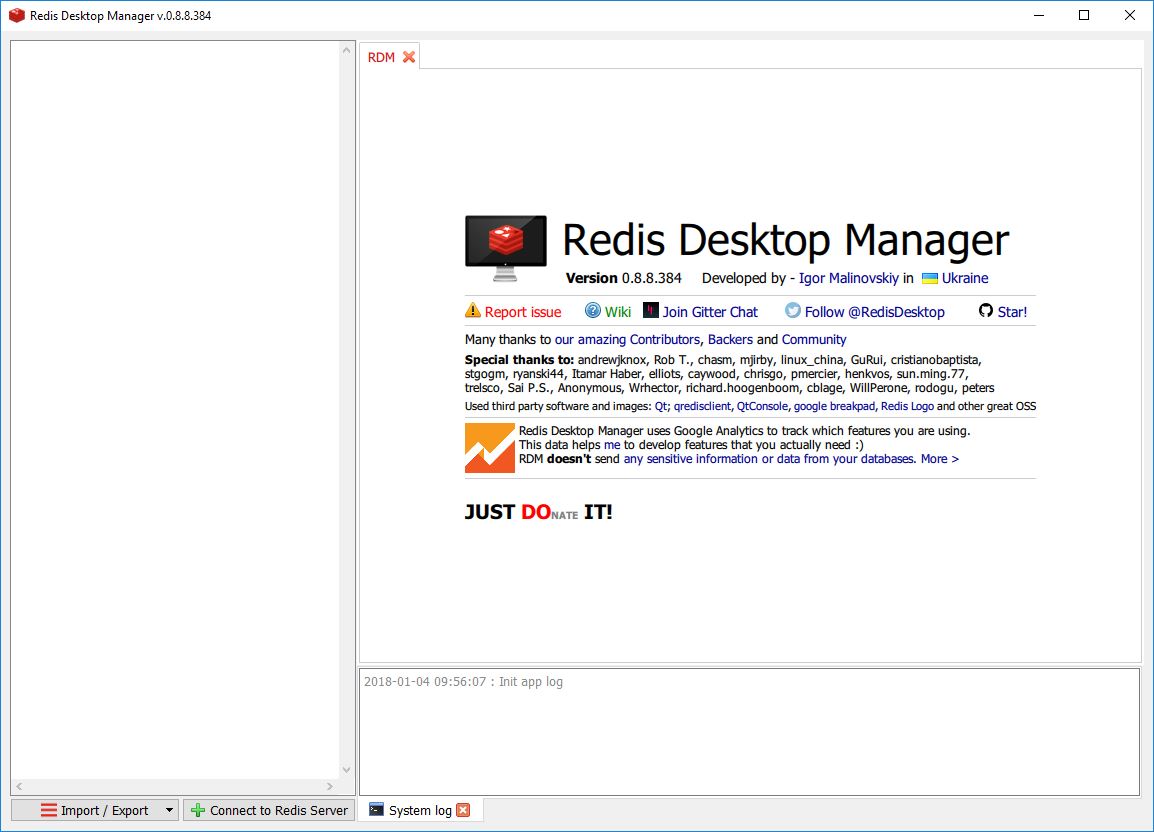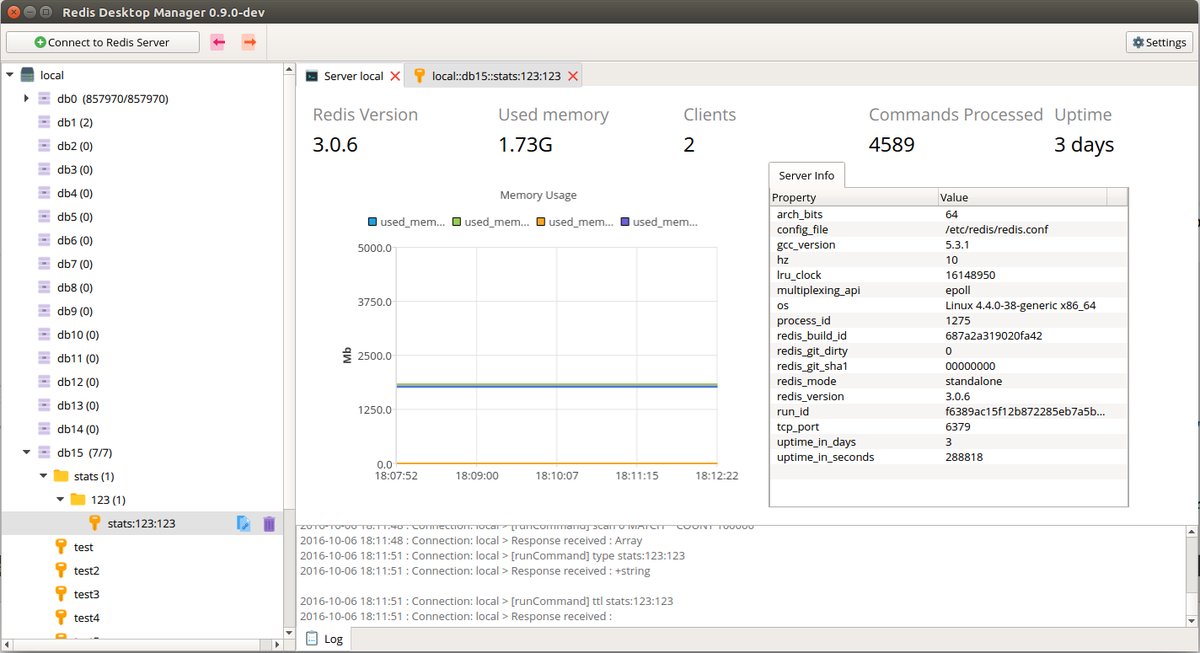Dec 07, 2016 mac安装Redis可视化工具-Redis Desktop Manager. See full list on docs.redisdesktop.com. RDM offers you an easy-to-use GUI to access your Redis ® databases and perform some basic operations:. View keys as a tree; CRUD keys; Analyse memory usage for entire DB or for selected namespace in tree-view (Redis ® = 4.0 is required); List connected clients. Mac安装Redis可视化工具-Redis Desktop Manager.
Donate(捐赠作者)
Introduction
Official website: https://quick123.net/
Redis Desktop Manager Dmg Download
QuickRedis is a free forever Redis Desktop manager. It supports direct connection, sentinel, and cluster mode, supports multiple languages, supports hundreds of millions of keys, and has an amazing UI. Supports both Windows, Mac OS X and Linux platform.
QuickRedis is an efficiency tool, when others are trying to type commands, and you are already drinking coffee.
(QuickRedis 是一款 永久免费 的 Redis 可视化管理工具。它支持直连、哨兵、集群模式,支持亿万数量级的 key,还有令人兴奋的 UI。QuickRedis 支持 Windows 、 Mac OS X 和 Linux 下运行。
QuickRedis 是一个效率工具,当别人在努力敲命令的时候,而你已经在喝茶。)
Download URL
Download
使用 百度网盘 下载
Windows & Mac OS X & Linux :链接: https://pan.baidu.com/s/1Z_CQQ7_VRtuP2moEPLlRJg 提取码: mbie
Download from github
Windows & Mac OS X & Linux : https://github.com/quick123official/quick_redis_blog/
Download from gitee
Windows & Mac OS X & Linux : https://gitee.com/quick123official/quick_redis_blog/
Software screenshot
-The keys are displayed in the form of a directory
-Home page
-Connection management menu (support multi-directory management, support copy connection, support drag connection to directory)
-Multilingual (Simplified Chinese, Traditional Chinese, English, Japanese, French)
-Quickly close multiple tabs
-Direct connection mode configuration
-Sentinel mode configuration
-Cluster mode configuration
-Command Line
Redis Desktop Manager Deb
-String type management (support value json formatting, key modification, ttl modification, key deletion)
-List type management (support list paging query, add, delete)
-Set type management (support set paging query, add, delete)
-Hash type management (support hash paging query, add, delete, modify)
FAQ
If you have any questions about usage, please feel free to leave a message in the following ways:
github address
gitee address
Open source code we used

快速开始
开发阶段:1. yarn run start1;2. yarn run start2
打包:1. yarn run build:mac;2. yarn run pack:mac
Yes, it's been done already. No, it's still not particularly easy. You do not need to use either Qt Creator or VS2015.
I am building on information found here, here, and here. Thanks to these folks and the contributors to RDM.
With this document, I sought to 'trim the fat' from these other guides and prove that VS2015 itself was not in fact necessary - just its tooling.

Prerequisites
- VS2017 Community
- Workloads: 'Desktop development with C++'
- Individual components:
- MSBuild
- VC++ 2015 v14.00 (v140) toolset for desktop
- Windows 10 SDK (10.0.14393)
- Windows 10 SDK (10.0.17763)
- Windows 8.1 SDK
- 32-bitCMake 3.x
- Python 2.7 - make sure the path to
python.exeis in your Windows%PATH% - NSIS - only needed if you want to build an installer
Clone
From a Bash shell:
Build

NOTE: Replace %BASEDIR% below with the path to the RedisDesktopManager directory you just cloned.
Now, find 'Qt 5.9.7 32-bit for Desktop (MSVC 2015)' in your Start menu. Run it, and execute the following commands in the resulting terminal:
If you don't want or need an installer, then your binaries are in %BASEDIR%binwindowsrelease. If you are unlucky enough to need that... read on.
Installer
From the Qt terminal you used in the previous section:
Prepend the following to the DEFINES= on or around line 14: -DAPP_NAME='RedisDesktopManager' -DAPP_VERSION='0.9.9' -DCRASH_SERVER_URL='https://oops.redisdesktop.com/crash-report'
It shoud look like:
Then, back in the terminal:
Redis Desktop Manager Dmg Login
There should now be a redis-desktop-manager-0.9.9.exe in %BASEDIR%buildwindowsinstaller.
Wasn't that fun?